
An organization identifying itself as "Rock Builders" has notified us of their plans to demolish the apartment buildings next door in order to "start the project of building new house." This is tragic both because of the noise, work crews and dust that will inevitably accompany the project, and becausethere's such a great building there now.
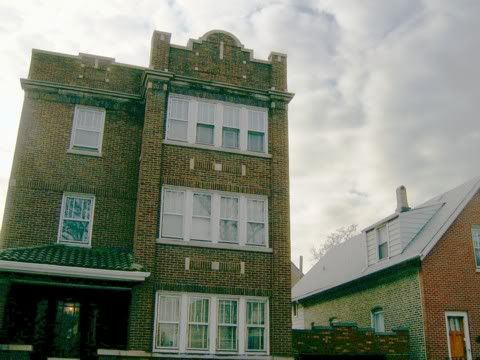
It's a classic three-flat on two lots with addition units in the coach house on the alley.
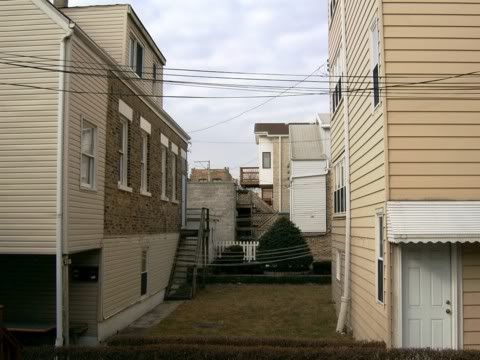
When we moved in the property included five or six units which were mostly occupied by older Polish immigrants with modest incomes and modest English language skills. The building was owned by a nice old German lady named Rosie who had lived in the neighborhood since marrying an American GI in the aftermath of WWII and accompanying him back to Chicago. Rosie died last year, and some investors apparently bought the property and kicked the residents out. One older woman remained in the coach house until a few weeks ago, I suppose she was the only one with an actual signed lease.
I like the building because it integrated more affordable housing into a street of single-families and two-flats which is getting more and more expensive, and because if its modest but effective use of decorative detail.

I had no idea they planned to knock it down and I'm really upset about it. Just a block away, a similar building has been converted into very nice condominiums that I migh even be able to afford. Why not this one?
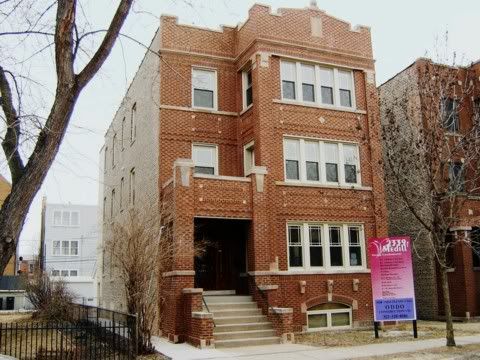
The answer probalby lies with our f-ing property taxes. Since the buildings sit on two lots, the property is valued and taxed at the price it can bring on the open market - as many as eight large condominium units or two full-lot mansions. Moderately priced rental units are never going to cover mortgage and property taxes, and while the main building could be converted to three condominiums, the coach house will never appeal to an upscale buyer, and there is only one parking space, in the garage to the west of the main building.

Chicago zoning, of course, requires a parking spot for each new unit built. Yet another way city policies promote destruction rather than preservation.
I've been so busy lately with work and life that I haven't been able to keep up with writing this blog, much less respond to comments. Several people have commented on the neighborhood destruction situation:
At 1/18/2005
10:05:54 AM, Wells said...
Its the little details, like the workmanship on the trim - or even how the entrance of a building (inside) is put together. What drives me crazy is when there are building with terra cotta roofs and other easily saved parts that are not used. One building in New York was probably three stories and was knocked down for a 10-12 story building - but they supposedly are incorporating the old roof into the new building. I have seen it a few times in New York, but I hear it is very common in San Fran to use a system where steel beams are used to hold up the outside while the inside of the building is completely demolished and the new building is put up within. The exact name escapes me, but I believe one of the new buildings recently renovated by the SF Music Conservatory or whatever it is called used this method.
At 1/28/2005
03:05:27 PM, Stockton&Tweed said...
In Washington they tear down buildings but leave the original facades. (Building height restriction makes this pretty easy to do.) The result is new buildings behind the historic facade. It works out quite well, except that some of the smaller buildings' interiors are probably very interesting and get demolished all the same.--Tweed
At 2/3/2005 04:35:40 PM, Anonymous said...
I'm always concerned about these demolitions as well. i'm a member of preservation chicago (www.preservationchicago.org). the organization advocates for the preservation of such architecurally important buildings. It is a shame about this bank, indeed.
East Coast cities including Washington and New York have generally done a much better job at neighborhood preservation. They consider their histories as important and the unique character of their neighborhoods as something special which attracts people to the city and is a source of pride for residents. Another great example is Boston. While I was there a few weeks ago I saw block after block of old school neighborhoods in very good shape. While there were naturally some newer buildings interspersed, they had been carefully desinged to fit in with the look and feel of the existing urban fabric.
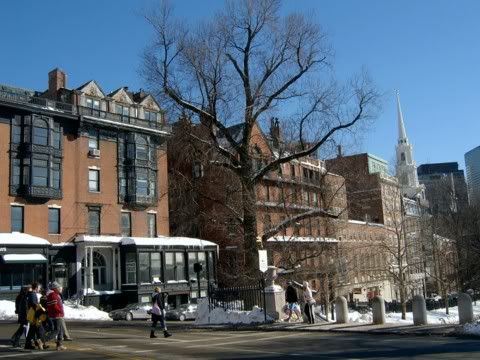

Beacon hill has kept the narrow streets and steep hills of its storied past, even though this neighborhood design means that a severe snowstorm can paralyze the neighborhood for weeks.
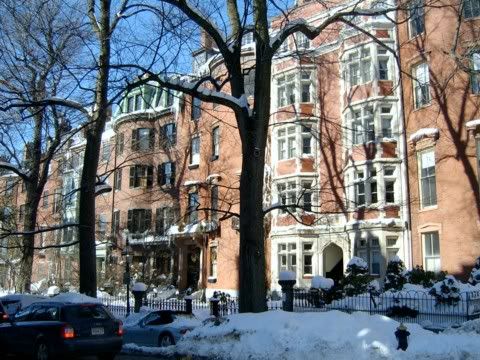

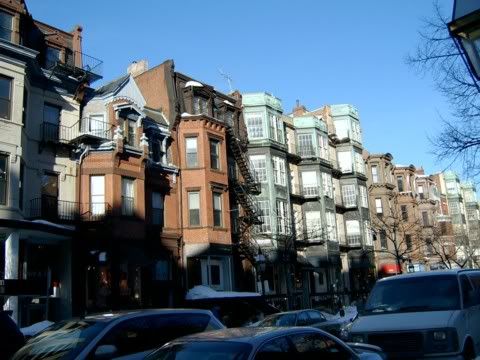
In Chicago, rows of apartment buildings like this would be interrupted by horrible glass modernism.
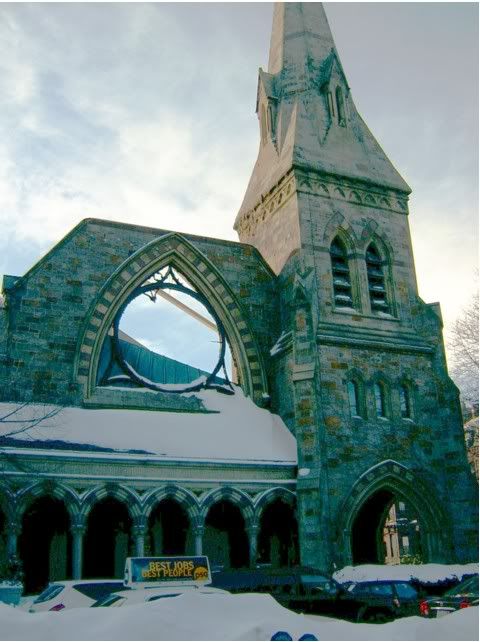
Bostonions even try to preserve what's left of historic buildings destroyed by fire. The new church incorporates the remaining wall of the old, burned church.
I have a couple thoughts on why this doesn't happen in Chicago. First of all, the neighborhoods people have preserved in the East tend to have remained upscale for most of their history. Secondly, it seems like the population has been more engaged and supportive of historic preservation. Polls about development concerns in Chicago conducted by Metropolis 2020 have shown preservation dead last on the public's agenda, at about 11%. Why? Because Chicago stands on a ledge. It hasn't flourished as a modern international metropolis over the past couple decades, but it hasn't collapsed into ruin like Detroit or Baltimore either. Residents feel that things have been steadily improving, but they worry that the next economic downturn or new burst of suburban development (say a new state highway in the southwest suburbs or the apocalyptic nightmare of a suburban airport at Peotone) will suck resources out of the city and bring about its final collapse and the exodus of the rest of the middle class. So people, and expecially politicians, are desperate for "development," any development, even if it's Wal-Mart. They view any attempt at preservation or neighborhood building rules such as height restrictions, as lowering property values and threatening to turn healthy neighborhoods into ghetto. Many people here don't like old stuff because they've only seen it in the context of segregated, sub-standard ghetto housing that has not been maintained, in neighborhoods where crime has been rampant, schools are crappy and you can't even buy decent produce. Old housing stands in the neighborhoods their parents fled in panic 40 years ago. In those neighborhoods, residents often wish they could get rid of "obsolete" structures and infrastructure in the vain hope that development will give them jobs, rather than push them out. It doesn't occur to them that other neighborhoods with exactly the same kind of built environment and infrastructure are thriving, because in this most segregated of cities, they never visit those neighborhoods.
Chicagoans are almost certainly wr0ng about this, by the way. Landmarking the neighborhood of Brooklyn Heights in New York has had exactly the opposite effect, sending property values skyrocketing over the past few decades.
As for Preservation Chicago, they are certainly fighting the good fight when it comes to trying to save the old Cook County Hospital. But overall my impression has been that they are too cozy with the city and developers and not willing to go to the matresses in most disputes. Some board members have even worked at architecture firms that have designed the replacements for demolished landmarks. What we need here are not public relations campaigns to save popular landmarks, but changes in public policy that put a priority on neighborhood preservation, even if that means some wealthy investors won't get to make as much money from their property as they had hoped.
No comments:
Post a Comment